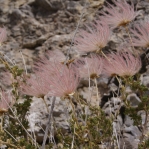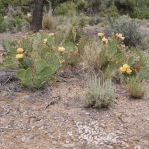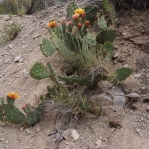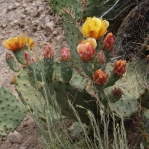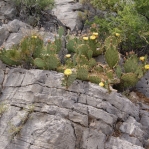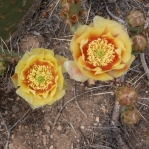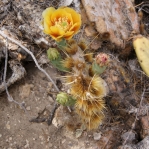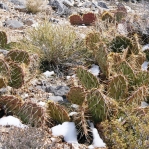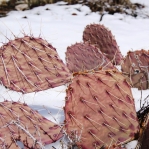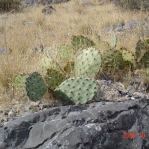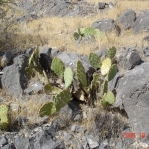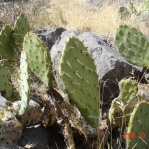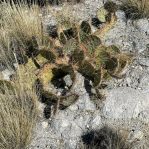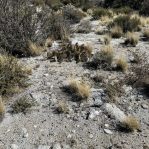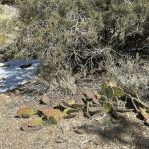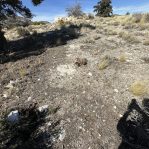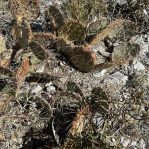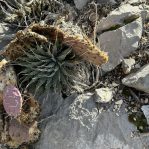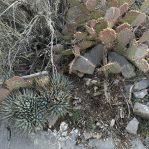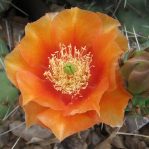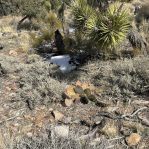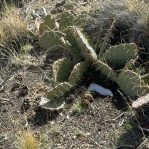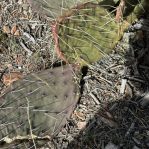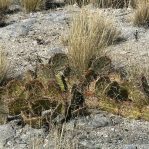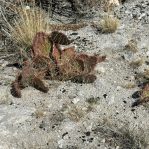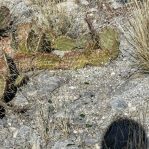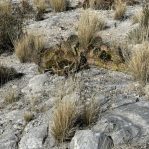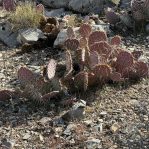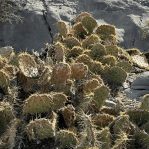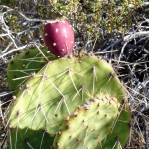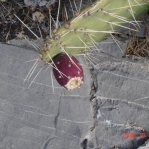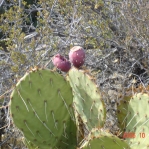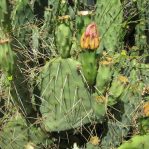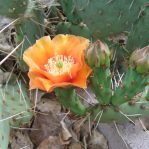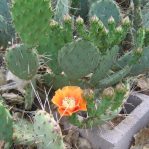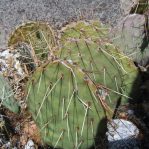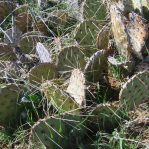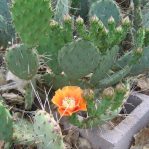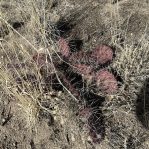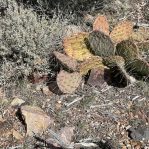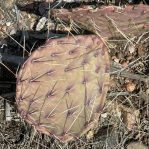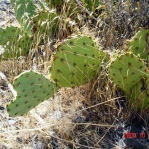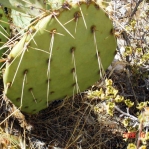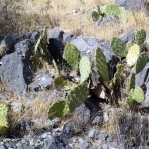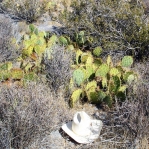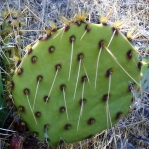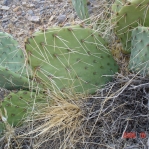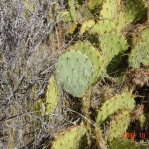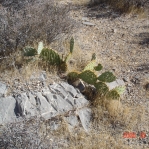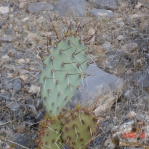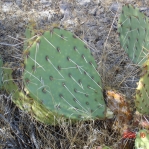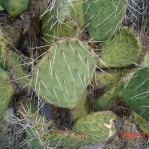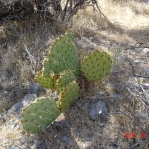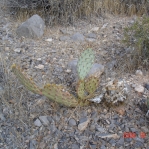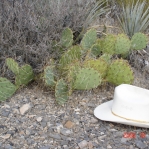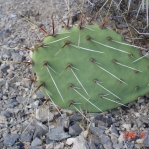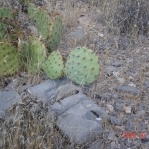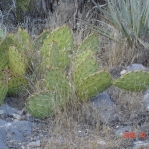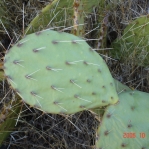
Engelmann & Bigelow, Proceedings of the American Academy of Arts and Sciences 3: 293, 1856
Lectotype; Herbarium (O. mojavensis-like); Herbarium (O. mojavensis-like); Herbarium (O. mojavensis-like); Drawing (The Botany of the Expedition, 1856)
Original Description
What is Opuntia mojavensis?
Opuntia mojavensis is an enigmatic prickly pear cactus. The only historical drawing of this cactus shows 2 spine clusters and an immature or sterile fruit. The lectotype for this prickly pear also has limited material. It was found at about 4,500 feet at the summit of Mt. Potosi in southern Nevada as well as Crestline, CA (about 6,000 ft) and other similar elevations above hot deserts.
Details
O. mojavensis forms woody-stiff plants sprawling to 2 m across. O. mojavensis has distinctly angular branches caused by its woody nature as well as sometimes-rising branches. Cladodes are irregular in size but often obovate. The spines seem similar to those of the lectotype as well as in the drawing above. However, spination is irregular and there are 0-2(3) reflexed spines per areole, even on the same pad. Spines are usually yellow but may be tan. If 2 spines, the second, lower spine is much shorter and more reflexed. Plants may turn a pleasing red-purple color in winter.
Flowers are 5-8 cm across and yellow with distinct or light red centers, green stigmas, and yellow anthers. Outer tepals may be tinged with red or red-orange. Fruit is reddish and may be barrel-shaped.
Ploidy is unknown.
Other Notes
We observed a population of plants growing at the summit of Mt Potosi (Highway 160 summit) near Las Vegas, Nevada that we interpret be O. mojavensis. We base our description of the taxon on that population and on similar plants found further west mostly in the trans-montane regions of California. The original location (mountains above Victorville/Hesperia, California) matches the Mt Potosi location in general terms of plant companions and altitude but is about 150 miles west of Mt. Potosi. Thus, we envision O. mojavensis as a species of high elevations west of southern Nevada above the Mojave Desert. It also extends into the mountains of southern California. We have seen the taxon near Big Bear City and Crestline in California.
Because of its attractive flowers, angular growth shape, and obvious cold hardiness, O. mojavensis would be interesting in a garden. However, it is a large sprawling, large plant.
Botanist Root Gorelik has an entirely different interpretation of O. mojavensis and gives the name a thorough discussion and comes to a different conclusion than we find (see page 198).
Also see, Notes on Some Southern California Plants, Author(s): S. B. Parish, Source: Botanical Gazette, Vol. 65, No. 4 (Apr., 1918), pp. 339-340.

